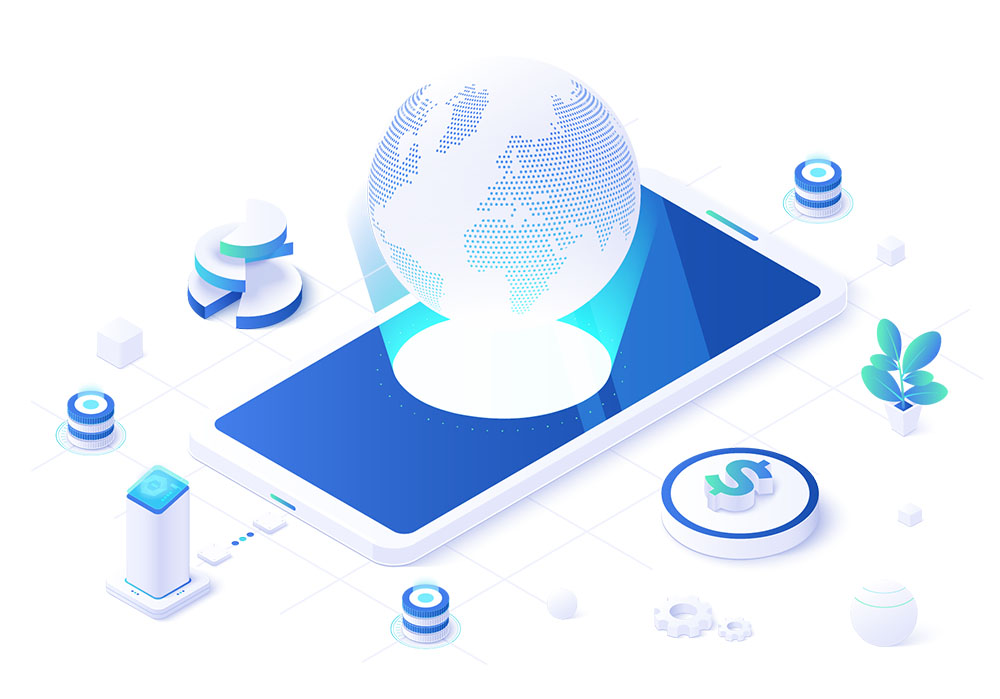

How individuals interact with your digital properties – your websites, mobile websites, mobile applications – is what we call digital experience.
The most basic objective of any digital strategy is to create digital interactions that adjust and adapt to customer needs and intent in real time – they serve up the right content to the right customers at the right time on the right device to ensure they can effortlessly and effectively achieve their objectives.
A well-constructed digital channel benefits your company and your customers by providing a proactive, tailored experience that effortlessly guides customers through their journey in a manner that delivers the brand experiences and emotional connections your company intends.
A changed world
It doesn’t take a rocket scientist to see or understand that the pandemic changed the world and really accelerated the digital transformation.
Overnight, we learned how to work remotely through digital channels. We learned how to buy our groceries online. We learned how to do yoga courses online. All of the things that we were doing in person before the pandemic now had a digital spin. It’s something that is here and it’s not going away.
Recent studies from the XM Institute indicate that people do not expect to do any less of what they’re doing online than they are today. They actually expect in the future to be doing even more online. We call this digital momentum, and it ultimately is the idea that not only are we going to be doing stuff online, but we’re going to be doing more stuff online in the future.
The Human/Digital Balance
Listen to Walker expert Elliott Moran discuss the importance of balancing human and digital interactions.
What is digital customer experience management?
Digital customer experience management involves listening to customer perceptions about their digital experiences and analyzing their sentiment, intentions, and actual website usage data. These data allow you to understand what customers are trying to accomplish, what feels broken or is getting in the way, and where improvements need to be made.
With this approach we are engaging with customers in real time, while they’re performing the actions necessary to achieve the objective of their visit. We can learn a lot about customers by asking questions at the appropriate time, but we can also make use of the data they supply in their interactions – called “zero-party data.” These are data associated with the individual that they are freely offering to the business as they pursue the objective of their visit. Customers are willing to share this information because they want and expect companies to deliver a seamless, personalized experience.
Digital Experience Metrics
Three metrics have emerged as the primary Key Performance Indicators for digital interactions.
- Success: Was the customer able to accomplish what they came to do?
- Effort: How easy or difficult was it to accomplish their task?
- Emotion: How did it make them feel?
All these data sources – customer sentiment, user intention, digital activity, zero-party data, etc. – allow companies to understand the needs, emotions, and behaviors of their customers in deep and new ways, but only if the company makes full use of them, and that requires a focused, resourced, and mature experience management team.
How to get that digital momentum going?
To start or build momentum for your digital experience management, it’s important to start with an objective in mind. What are you seeking to solve for? That answer is going to be different depending on who you speak to within the organization. Seek out your key users, think about how they understand the business, and talk to them in their language.
You might talk to an IT director who just wants to understand what customers think about their page load speed so they know whether to budget more for server space. You might talk to a marketer who wants to know which buttons are actually creating enhanced calls to action. Your contact center leader might want to understand how to effectively deflect more calls to digital channels. Working with a number of stakeholders at the organization will help you get a clear understanding of all the things you could learn through digital listening.
And then what’s the path to make that happen? At Walker, we use a three-phased approach. We typically start with a “track and diagnose” phase where we stand up some intercepts on your website and determine the most common or problematic journeys. We essentially identify what we need to fix within this digital property.
Then we pivot to something called a journey-based deep dive. Now that we understand which are the common and problematic journeys, how do we fix them? We send out very targeted, specific, quick-hit surveys with two to five questions to identify the action steps and how we actually go about fixing a certain digital journey. For example: Why did you abandon your cart? What was most difficult about signing up for our newsletter?
Since the digital experience is monitored in real time, negative experiences can be stopped in their tracks.
For example, we can look at dwell time and trigger an intercept after someone’s been looking for a long time at how to go about solving their issue. And we can serve a piece of content that says, “Do you need more help?” We’re taking an inferred signal to help support that experience in real time. That can be done in any number of different ways: product, product delivery, or service and support delivery.
The third phase as an organization matures is to move into what we call the activate and transform phase. We’re already delivering the information we gather through our listening posts to our dev teams to improve the experience itself. But how can we take that a step deeper by integrating some of this zero-party data and actually help? This is where we start thinking about how to personalize this experience and serve content that gets them to a service channel, support channel, a different kind of product, or a recommender. It’s about creating a multi-path set of interactions that guides customers to where both parties (the customer and the company) want the journey to go. It really is the next step in the final evolution of the digital customer experience journey.
ROI of digital interactions
Improving and expanding your digital channel has a strong positive impact on company performance. Self-service is key to cost reduction, and digital channels are highly optimized for it, but it’s critical to maintain optimal experiences when shifting customers to self-service. Digital listening can ensure you are maintaining customer satisfaction.
Research by the XM Institute has shown that digital experience gaps cost companies an average 8% loss in revenue across industries. This gap is closed by improving customer emotions, ease, and success – three things that a great digital channel can deliver – which has a big impact on customer spend. Extremely satisfied customers spend 37% more. Customers who have an easy experience spend 23% more.
Developing and executing a strong digital strategy that is focused on creating emotional connections and effortless experiences will be substantially more beneficial to your company than just focusing on the cost savings of the digital channel.
Conclusion
The value of digital customer experience listening is that it allows us to capture massive sums of data while the interaction is happening – and that data lets us get to know the person on the other side of the screen and connect with them.
You’re not just asking how a transaction went. You also have all of the connected information, the operational data that’s occurring in real time. This allows us to connect this information across the enterprise and personalize the experience, creating those positive and emotive experiences that produce loyalty outcomes and ultimately drive revenue and business objectives.
